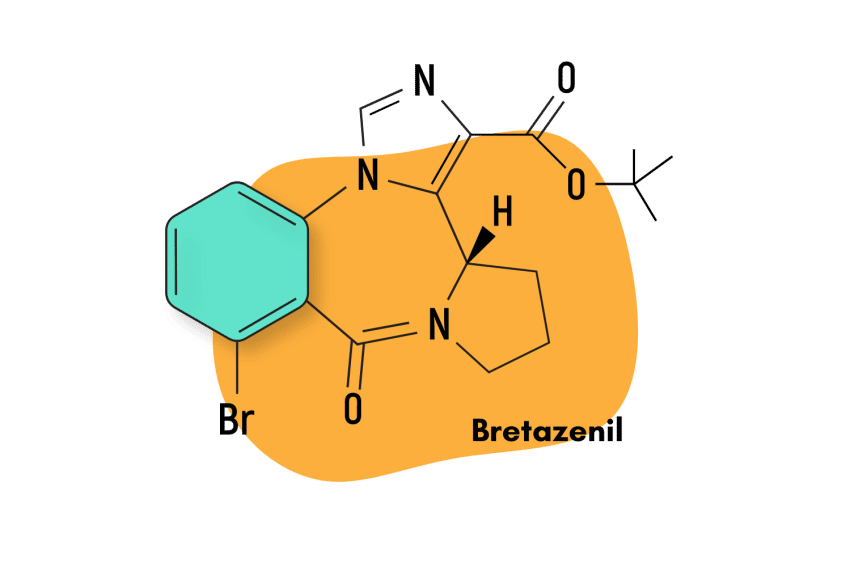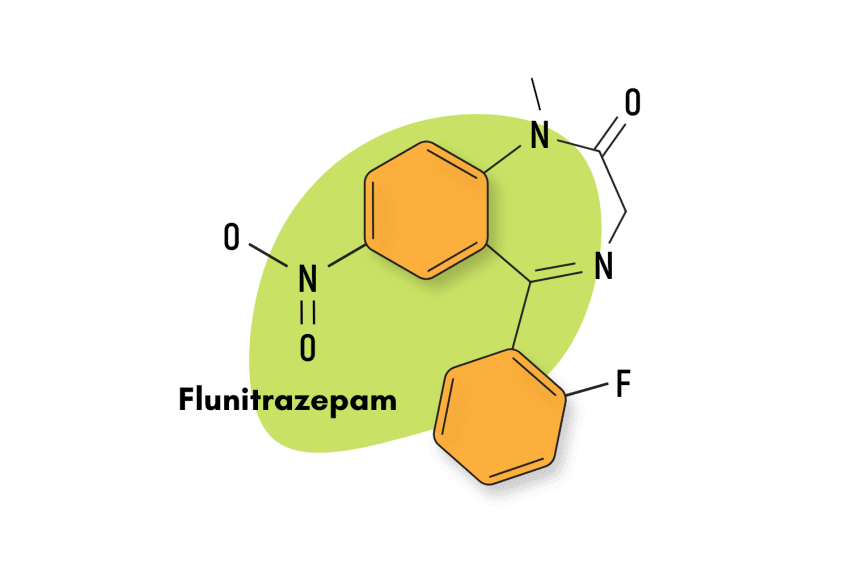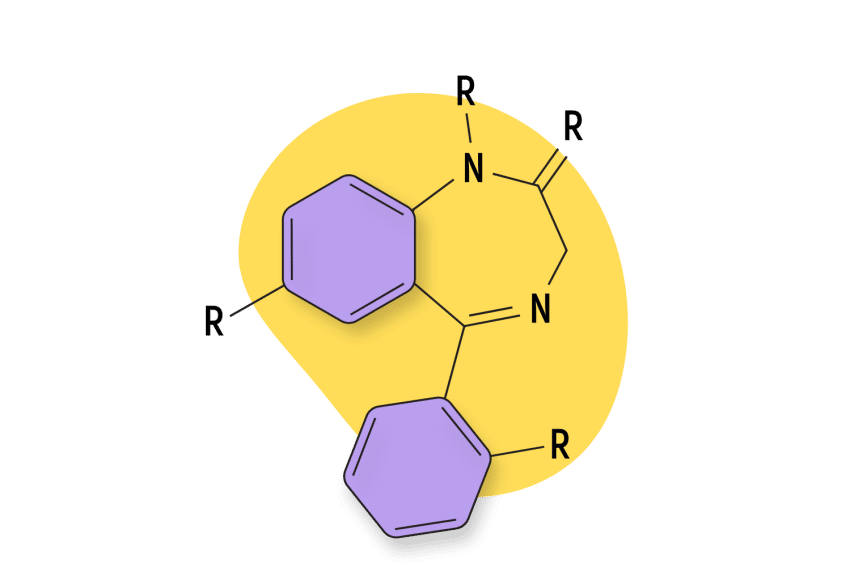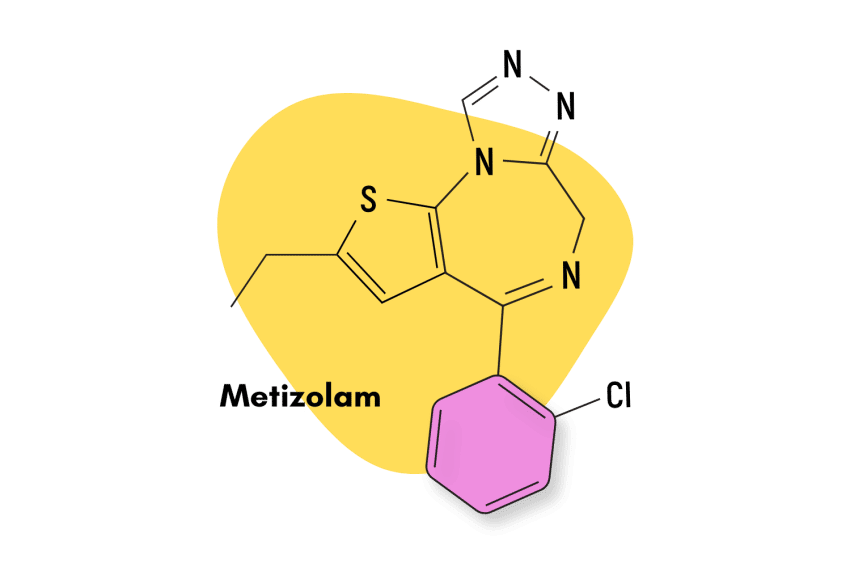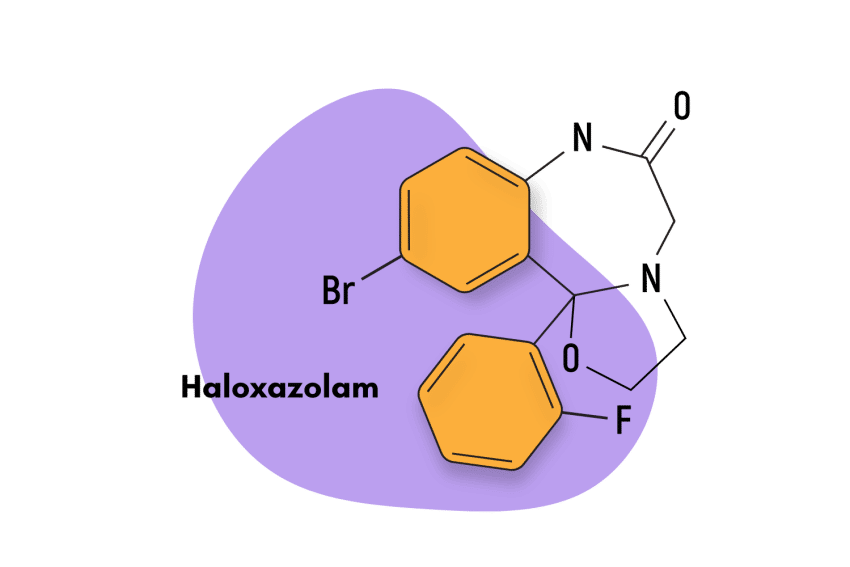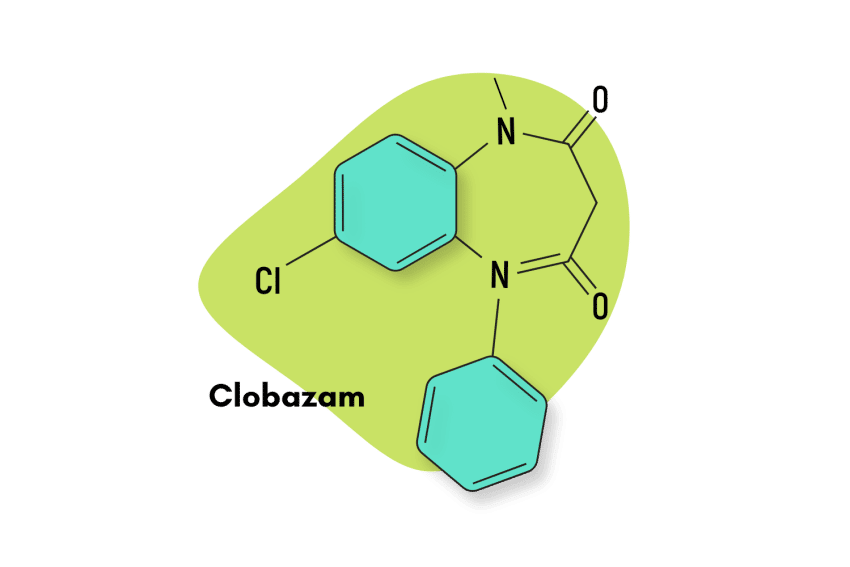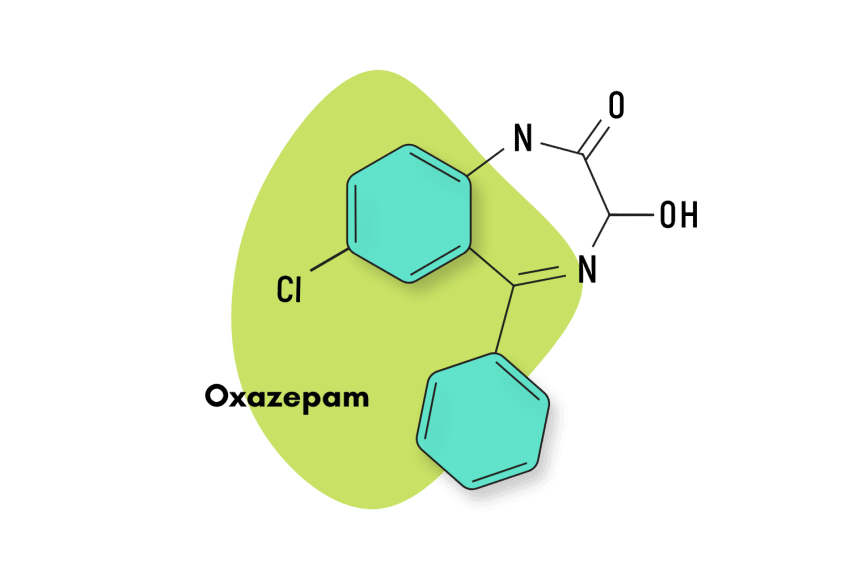Temazepam (Restoril): Effects, Safety, & Harm Reduction
Temazepam’s effects are euphoric and, in higher doses, similar to alcohol. Recreational use is popular — sometimes, it’s a good idea not to follow the crowd. 🐑
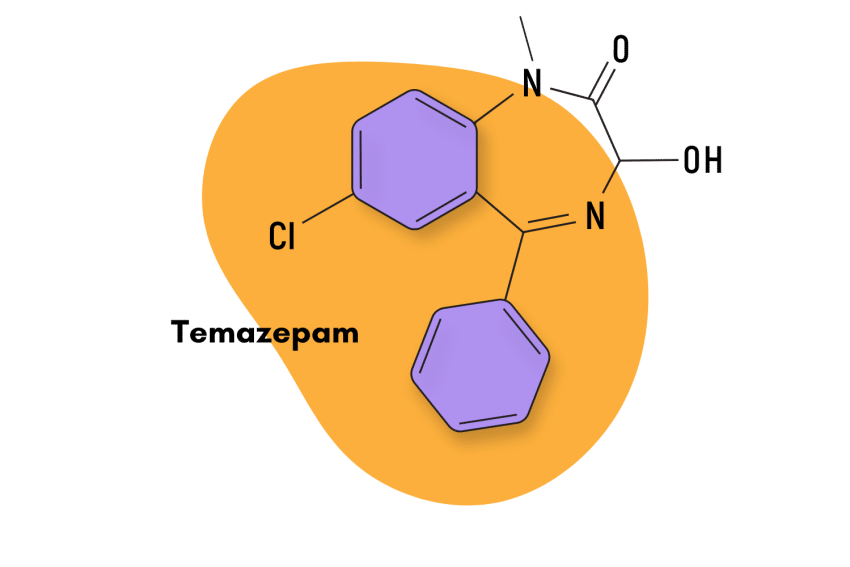
Temazepam (Restoril) is a minor metabolite of the more well-known benzodiazepine, diazepam. It’s primarily used for the treatment of insomnia and related sleep disorders.
In terms of its chemical structure, temazepam is classified as a 1,4 benzodiazepine, which means it belongs in the same category as other “classical” benzodiazepines such as chlordiazepoxide (Librium), lorazepam (Ativan), and clonazepam (Klonopin).
As such, temazepam shares the basic mechanism of action as these compounds and produces a range of traditional effects commonly associated with benzodiazepines. It’s a powerful relaxant — causing users to feel calm and euphoric.
People who use this drug recreationally claim it makes them feel as if none of their problems matter anymore. At higher doses, they experience an intoxication similar to alcohol.
Blackouts are also common with high doses of this medication.
Temazepam has been around since 1969 and was once the first-line treatment for insomnia. Today, temazepam use has largely been replaced by safer Z-drugs like zolpidem instead.
Temazepam Specs
IUPAC Name: 7-chloro-3-hydroxy-1-methyl-5-phenyl-3H-1,4-benzodiazepin-2-one
Other Names: Restoril, Normison, Euhypnos, Temaze, Tenox
Metabolism: Temazepam’s metabolism is not CYP mediated. The drug is metabolized through conjugation and demethylation before excretion.
Duration of Effects: Intermediate-Acting (10–15 hours). Effects begin in approximately eight minutes and last for up to fifteen hours.
How Does Temazepam Work?
Temazepam, as well as most other benzodiazepines on the market, exerts its pharmacological effects through its interactions with the gamma-aminobutyric acid neurotransmitter, otherwise known as GABA.
It is important to understand that GABA is the primary neurotransmitter that the body uses for inhibitory purposes. That is its natural function. When benzodiazepines bind to GABA receptors, specifically to GABA-A receptors, they produce an effect that increases the natural functioning of the GABA-A receptor, which then, in turn, leads to a generalized depressive effect on the brain and central nervous system (CNS). This overall lowering or “calming” of brain and CNS activity is the underlying cause that produces the well-known anxiolytic (anti-anxiety), anticonvulsant, sedative, and hypnotic properties of benzodiazepines.
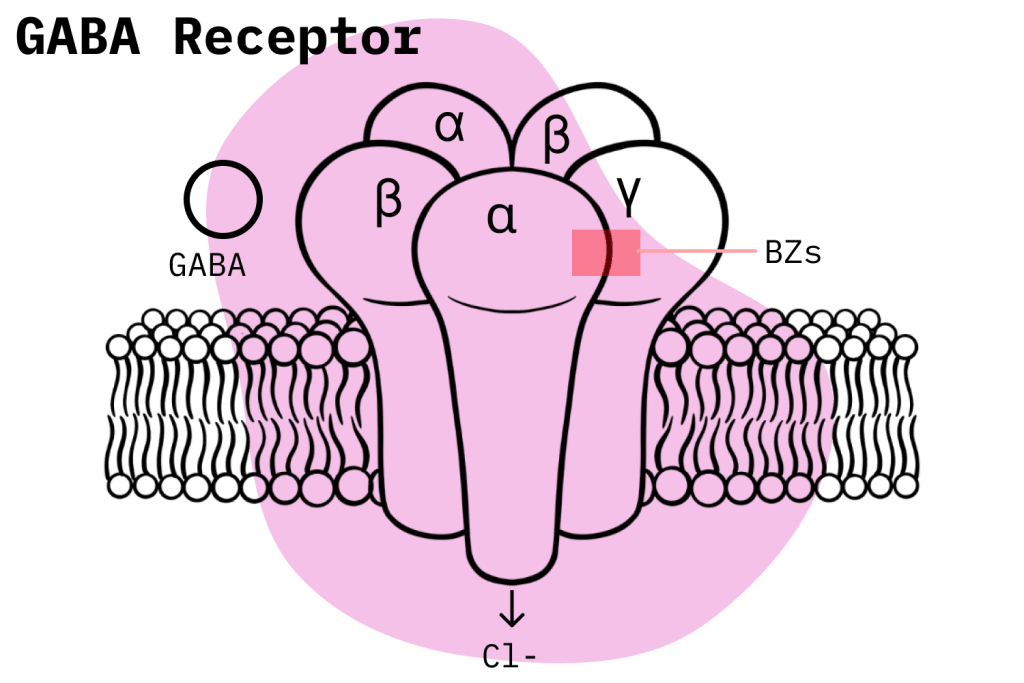
When benzodiazepine molecules bind to a receptor site in GABA-A neurotransmitters, they produce what is known as an allosteric effect [1], a roundabout way of saying that benzodiazepines increase the natural functioning of GABA-A.
Temazepam Pharmacokinetics/Pharmacodynamics
Temazepam is rapidly absorbed in the body, with effects usually starting in 30 minutes and lasting up to 15 hours. It has a relatively short elimination half-life of 5 to 11 hours and does not produce metabolites with pharmacological effects. This is an important quality when it comes to hypnotic agents as some of the longer-lasting hypnotics like flurazepam and nitrazepam usually tend to produce a residual “hangover” effect, which has the potential to affect cognitive performance the day after [2].
Temazepam has been found to improve sleep maintenance and potentially shorten sleep onset. In clinical trials, it consistently increased total sleep time and reduced wake time. Also, temazepam does not reduce the proportion of rapid eye movement (REM) sleep. However, it does delay the onset of the first REM period, which, in turn, shifts REM sleep toward later in the night. Temazepam also reduces stages 3 and 4 (slow wave) sleep [2].
The FDA has approved temazepam for the short-term treatment of insomnia (generally seven to 10 days).
Is Temazepam Safe? Risks & Side Effects
Temazepam is listed as a Schedule IV substance under the Controlled Substance Act in the United States. This means it has recognized medical uses but also can cause physical dependence and withdrawal symptoms, as well as a potential for misuse, albeit to a lesser degree than drugs in Schedule III.
Virtually all benzodiazepines are Schedule IV compounds, so this classification is not tremendously helpful when determining temazepam’s risk level compared to other benzodiazepines.

There is mixed evidence, but the general conclusion is that compared to other benzodiazepines, the potential to develop a physical dependence on temazepam is high. The FDA does not recommend the drug for long-term use because of this, and other factors must be considered. For instance, certain studies have found that tolerance to the sleep-inducing properties of hypnotics develops quickly. This would entail increasing the dosage to keep achieving the same effects, which raises the potential for misuse and dependence. This study found that, in some patients, tolerance to temazepam began in as little as one week [3].
However, as stated, the evidence is mixed. Some studies, such as this [4], fail to produce comparable results.
In general, users must exercise caution when dealing with benzodiazepines. Recent statistics in the United States have demonstrated an upward trend in fatalities related to benzodiazepine use. Almost all of these instances indeed involve some form of misuse, frequently recreational, but it still shows how dangerous these compounds can be, especially when polydrug abuse is involved.
Side Effects of Temazepam
The FDA claims that during clinical studies, temazepam was well tolerated. Side effects were usually mild and transient; adverse reactions occurred in only an estimated one percent of patients.
The FDA identified the following side effects:
- Drowsiness
- Headache
- Fatigue
- Nervousness
- Lethargy
- Dizziness
- Nausea
- Hangover
- Anxiety
- Depression
- Dry Mouth
- Diarrhea
- Abdominal discomfort
- Euphoria
- Weakness
- Confusion
- Blurred vision
- Nightmares
- Vertigo
Less frequent side effects (0.5% to 0.9%):
- Anorexia
- Ataxia
- Equilibrium loss
- Tremors
- Increased dreaming
- Dyspnea
- Palpitations
- Vomiting
- Backache
- Hyperhidrosis
- Burning eyes
- Amnesia
- Hallucinations
- Horizontal nystagmus
- Restless and agitation
Benzodiazepine Withdrawal & Dependence
Benzodiazepines, barbiturates, and alcohol elicit some of the most dangerous withdrawal symptoms among drug types. In rare instances, they can even be fatal. This risk is well known to doctors, so they usually attempt to prescribe benzodiazepines for the shortest time frame possible. In any case, the sudden discontinuation of benzodiazepines, even after a relatively short time, is not recommended.
Even without meaningful dependence symptoms, using a drug tapering procedure to get off benzodiazepines with minimal risk could be the safest option. However, benzodiazepine users should only attempt drug tapering with a doctor’s supervision, direction, and approval.

Users should also be aware that benzodiazepine withdrawal and dependence are still possible even without misuse. It is a common misconception that dependence is only a product of abuse. In fact, certain studies suggest the potential to develop a benzodiazepine dependence is quite high. For example, a study that examined patients who used benzodiazepines for longer than four weeks found that one-third of participants developed dependence and consequent withdrawal symptoms after completing treatment [4].
Harm Reduction: Temazepam
There are plenty of general recommendations that benzodiazepine users can rely on to stay safe. But, the considerations should come before starting a benzodiazepine treatment.
As we have seen, the potential for benzodiazepines to cause physical dependence, withdrawal symptoms, and severe adverse reactions still exists, even if users don’t abuse them. Reaching for a pharmacological solution might seem like the easiest way to solve a certain ailment, but users rarely consider what other problems that solution might bring.
Before using prescription drugs, users should always seek to try more natural solutions to their problems first. Many behavior-related therapies, such as exercise and treatment, often have great results. Users can also look for non-pharmacological remedies. Plenty of herbal options have exploded in popularity in recent years for this reason.

Essentially, users need to think long and hard about the consequences of prescription drugs because they are pretty serious. This consideration should also factor in how likely a user is to avoid misuse. Studies have shown that people with a history of abusing alcohol or drugs are more likely to abuse prescription drugs.
If a user decides to use benzodiazepines, they should keep certain things in mind. For example, the potential to develop physical dependence and withdrawal symptoms will always increase when higher and higher doses are used and the longer a drug is taken.
Temazepam Drug Interactions
Benzodiazepines are CNS depressants, and this implies certain things in terms of drug interactions. CNS depressants should never be mixed with other CNS depressants unless under a doctor’s guidance. The combinatory effect of these combinations often leads to respiratory depression: the leading cause of death in the United States.
Users should always take the time to learn what drugs are contraindicated for their prescription benzodiazepine so that they don’t put themselves at risk.
It is also essential to know what types of drugs and compounds can affect the CYP metabolism of your given benzodiazepine. Compounds that inhibit or induce the metabolism of a benzodiazepine can end up affecting the functioning of said drug within the body and thus increase the risk of an adverse effect.
Temazepam Contraindications
Prescription drugs almost always have a number of contraindications listed. These usually relate to special statuses like pregnancy, lactation, hepatic or renal impairment — things of that nature. However, disorders such as anxiety or depression-related conditions are also contraindicated. Certain drugs can be contraindicated too. Users should always make sure to check what these are.
Temazepam Dosage
For temazepam, the usual dosage ranges are between 15 to 30 mg, rising to 60 mg in certain cases [2].
The Mayo Clinic has the following doses for temazepam (capsules):
For insomnia (trouble sleeping):
| Adults | The usual dose is 15 mg at bedtime. Some patients may need 7.5 mg or 30 mg. Your doctor may adjust your dose as needed. |
| Older adults | At first, 7.5 mg at bedtime. Your doctor may adjust your dose if needed. |
| Children | Your doctor must determine the use and dose. |
Similar Benzodiazepines
Temazepam is closely related to other classical benzodiazepines like diazepam and clonazepam. It has an intermediate half-life and, compared to other benzodiazepines, has a high potential to cause physical dependence and misuse.
Loprazolam
Loprazolam has a similar chemical structure to temazepam, and they are both indicated for treating sleep-related disorders. They also share similar pharmacokinetics as they both have intermediate elimination-half lives, which helps reduce the “hangover effect” typical of hypnotics.
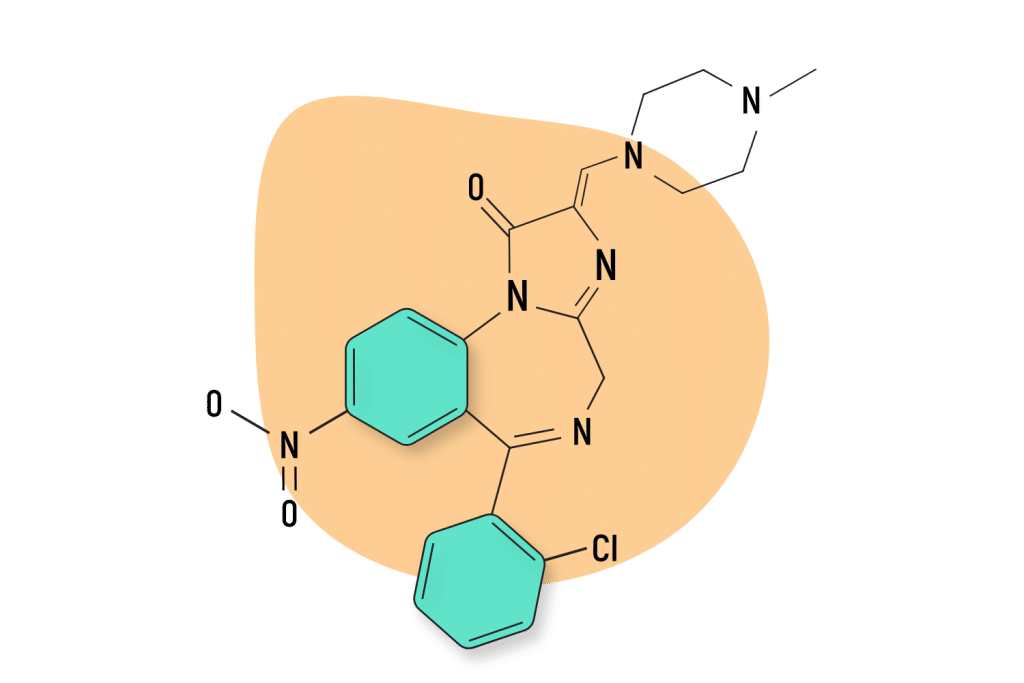
Nitemazepam
The chemical structure of temazepam closely resembles that of nitemazepam. Nitemazepam is a pro-drug of other benzodiazepines, including nimetazepam, and temazepam. Nitemazepam is not an approved medication.
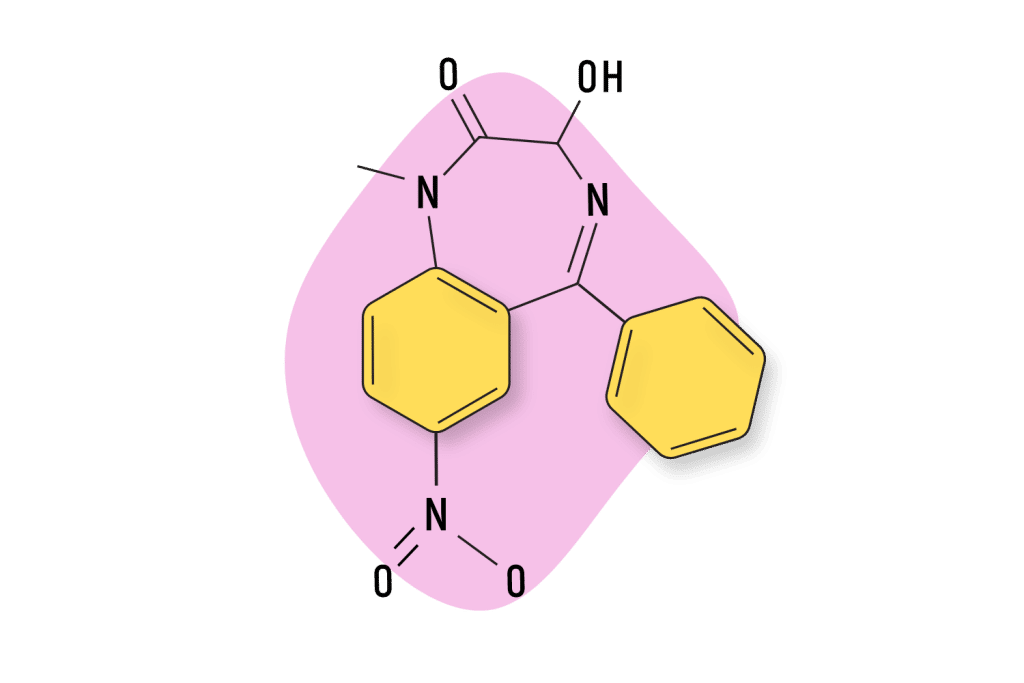
Flutemazepam
Flutemazepam is a fluorinated analog of temazepam and, as such, has incredibly similar characteristics and properties when compared to its parent compound, temazepam. However, flutemazepam is a far more potent compound than temazepam.
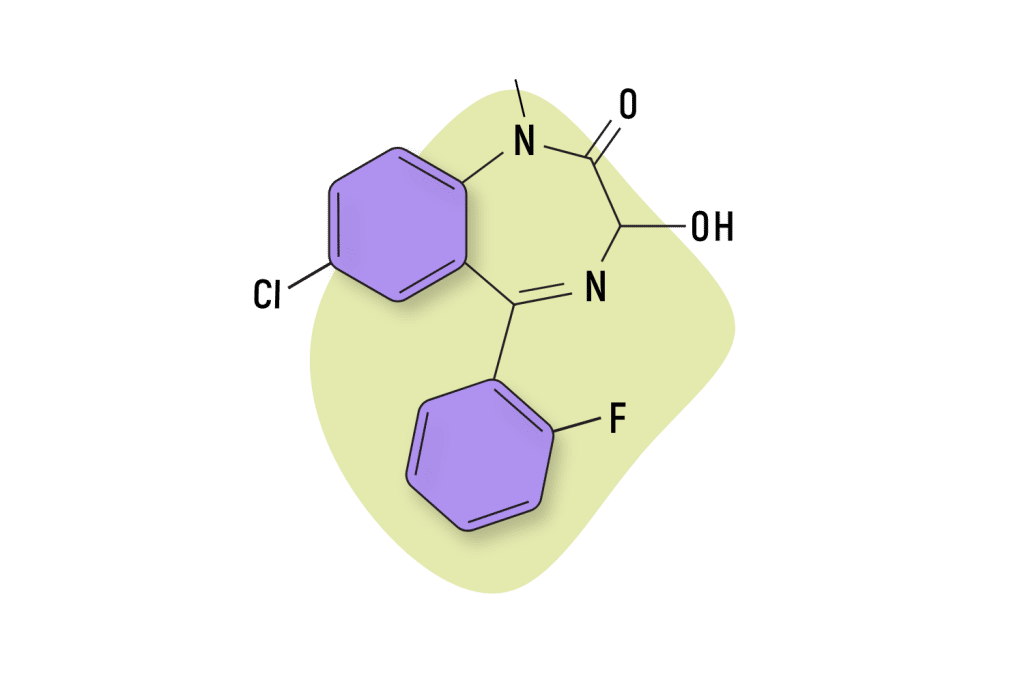
Clonazepam
Temazepam’s profile is comparable to that of the classical benzodiazepine clonazepam. Both these drugs have the chemical structure and mechanism of action to fall into the same category. They also have similar pharmacokinetics as both compounds are intermediate-acting benzodiazepines.
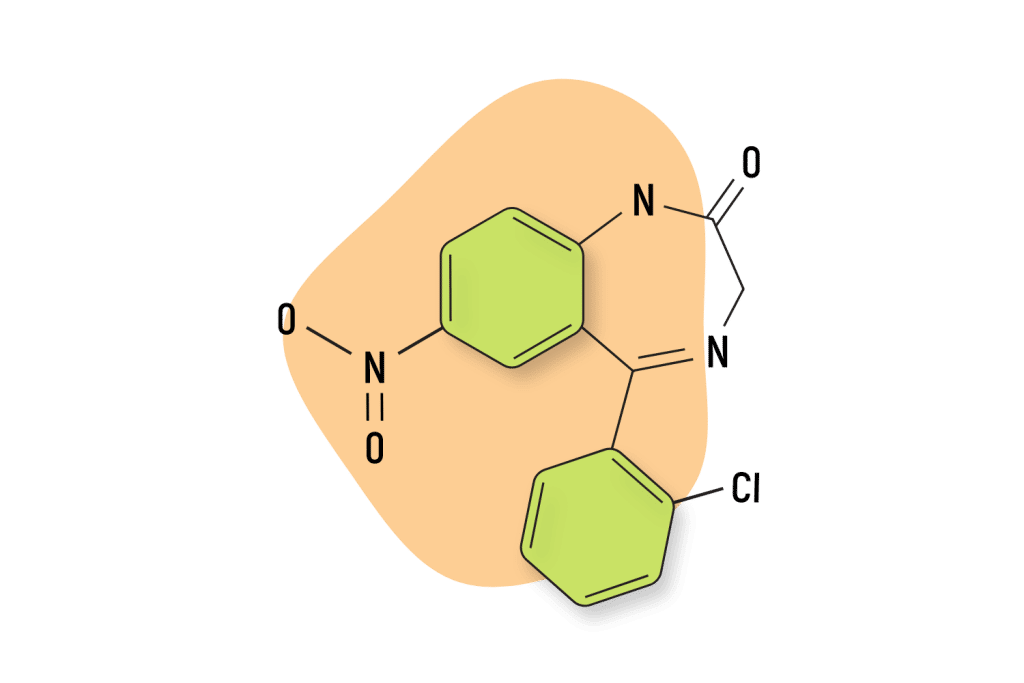
Natural Alternatives to Benzodiazepines
As mentioned, plant-based substitutes for prescription drugs are gaining immense popularity as they offer comparable benefits with fewer side effects. For instance, the kava plant has become a go-to in this sense. Research has shown it has the potential to induce states of calm and sedation, all while having a benign side effects profile [5].

Another option is the kratom plant. Kratom is a little riskier as it can cause physical dependence, but the risk is far less than that of benzodiazepines. Multiple studies have shown the kratom plant’s incredible range of effects. In low doses, it can act as a stimulant and produce euphoric effects, while in mid-to-high amounts, it has anxiolytic and sedative benefits [6].
Temazepam FAQs
1. What formulations is temazepam available in?
Temazepam is available in 7.5 mg, 15 mg, 22.5 mg, and 30 mg capsules.
2. What are the contraindications for temazepam?
- Pregnancy
- Concomitant opioid or CNS depressant use
- Underlying psychiatric disorders
- Operating heavy machinery
- Pediatric use (safety has not been established)
3. How long does it take to achieve peak plasma levels with temazepam?
Peak plasma levels occur approximately 1.2 to 1.6 hours (mean 1.5 hours) after dosing.
References
- Campo, Soria, C., Chang, Y., & Weiss, D. S. (2006). Mechanism of action of benzodiazepines on GABAA receptors. British journal of pharmacology, 148(7), 984-990.
- Heel, C., Brogden, R. N., Speight, T. M., & Avery, G. S. (1981). Temazepam: a review of its pharmacological properties and therapeutic efficacy as an hypnotic. Drugs, 21(5), 321-340.
- Roehrs, T., Kribbs, N., Zorick, F., & Roth, T. (1986). Hypnotic residual effects of benzodiazepines with repeated administration. Sleep, 9(2), 309-316.
- Riss, J., Cloyd, J., Gates, J., & Collins, S. (2008). Benzodiazepines in epilepsy: pharmacology and pharmacokinetics. Acta neurologica scandinavica, 118(2), 69-86.
- Cairney, S., Clough, A. R., Maruff, P., Collie, A., Currie, B. J., & Currie, J. (2003). Saccade and cognitive function in chronic kava users. Neuropsychopharmacology, 28(2), 389-396.
- Swogger, M. T., & Walsh, Z. (2018). Kratom use and mental health: A systematic review. Drug and Alcohol Dependence, 183, 134-140.

